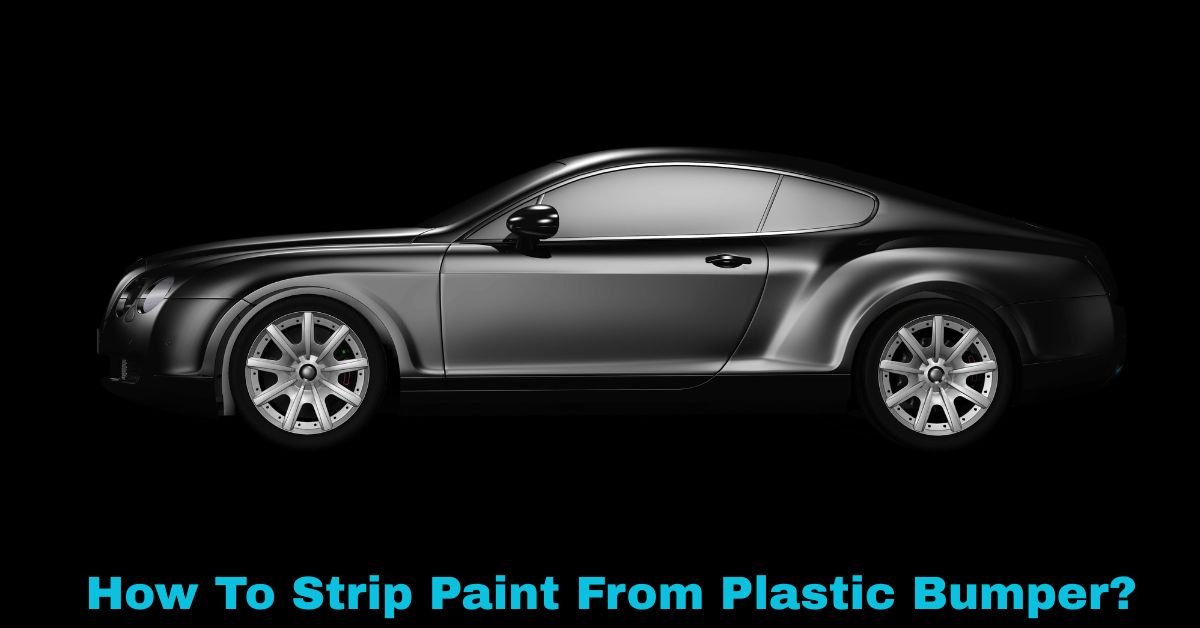Whether you’re restoring a car, changing colors, or fixing a botched paint job, stripping paint from a plastic bumper can be tricky business. Unlike metal, plastic is much more sensitive to heat, chemicals, and abrasives. One wrong move and you could warp or damage the surface, leading to costly repairs or replacements.
In this post, we’ll walk through a safe and effective method to strip paint off a plastic bumper—step by step—while preserving the bumper underneath. Let’s get into it.
How to Strip Paint from a Plastic Bumper (Without Damaging It)
Why Not Just Sand It Down?
Good question. While sanding can remove paint, it’s not always the best approach for plastic. Aggressive sanding can easily gouge or scratch the surface. If you’re dealing with multiple layers of paint or a thick coat of old paint, you’ll want a cleaner method first—like using a plastic-safe chemical stripper—before finishing with sanding and prep work.
What You’ll Need
Before you start, gather the following supplies:
- Plastic-safe paint remover (citrus-based or specialized automotive formulas work best)
- Plastic scraper or old credit card
- Soft cloths or microfiber towels
- Warm, soapy water
- Nitrile gloves
- Safety goggles
- Mask (for fumes)
- Drop cloth or plastic sheeting
- Optional: Sandpaper (400-600 grit) for light touch-ups
Make sure you’re working in a well-ventilated area, ideally outside or in a garage with airflow.
Step-by-Step Guide
1. Prep the Area
Lay down a drop cloth or plastic sheeting under your bumper. If the bumper is still attached to the car, mask off nearby panels and trim to protect them. If it’s removed, place it on a workbench or stable surface.
2. Clean the Surface
Use warm, soapy water to remove dirt, grease, or debris from the bumper. Dry it completely with a microfiber towel. The stripper operates more uniformly over a clean surface.
3. Apply the Paint Remover
Put on gloves, goggles, and your mask. Apply the paint remover as per the product instructions. Usually, you’ll use a brush or cloth to apply an even layer. Avoid over-applying—too much can lead to puddling and longer drying times.
Important: Choose a product that’s labeled as safe for plastic. Avoid anything with methylene chloride unless you’re very experienced and know your plastic type.
Must Read: Can Speed Bumps Damage Your Car?

4. Let It Sit
Let the remover do its work. Most products need to sit for 15–30 minutes. You’ll notice the paint start to bubble, lift, or wrinkle—that’s a good sign.
5. Scrape Gently
Use a plastic scraper or an old credit card to gently scrape away the loosened paint. Be patient. Avoid metal tools, which can easily gouge plastic.
If the paint is stubborn, reapply the remover and wait again. Multiple applications are better than rushing and damaging the surface.
6. Wash Off Residue
Once the bulk of the paint is gone, wash the bumper with warm, soapy water again. This removes any leftover chemical residue. Dry thoroughly.
7. Final Sanding (Optional)
If the surface feels uneven or still has tiny patches of paint, lightly sand with 400–600 grit sandpaper. Don’t go too hard—you’re just evening things out.
8. Inspect for Damage
Look over the bumper for any signs of softening, warping, or scratches. If the plastic looks good, you’re ready to prep for primer and repainting.
A Few Tips
- Test First: Always spot-test any chemical remover on a hidden part of the bumper to make sure it doesn’t damage or discolor the plastic.
- Don’t Rush: Plastic is much more delicate than metal. Let the chemicals do the work rather than forcing it with tools.
- Work in Layers: If you’re dealing with multiple coats or primer, you may need to repeat the process a couple of times.
Final Thoughts
Stripping paint from a plastic bumper isn’t as simple as it might seem—but it’s absolutely doable with the right tools and a little patience. Always prioritize products designed for plastic, take your time, and treat the material gently. Whether you’re prepping for a full respray or just fixing a patch, a clean, stripped surface is the best place to start.
